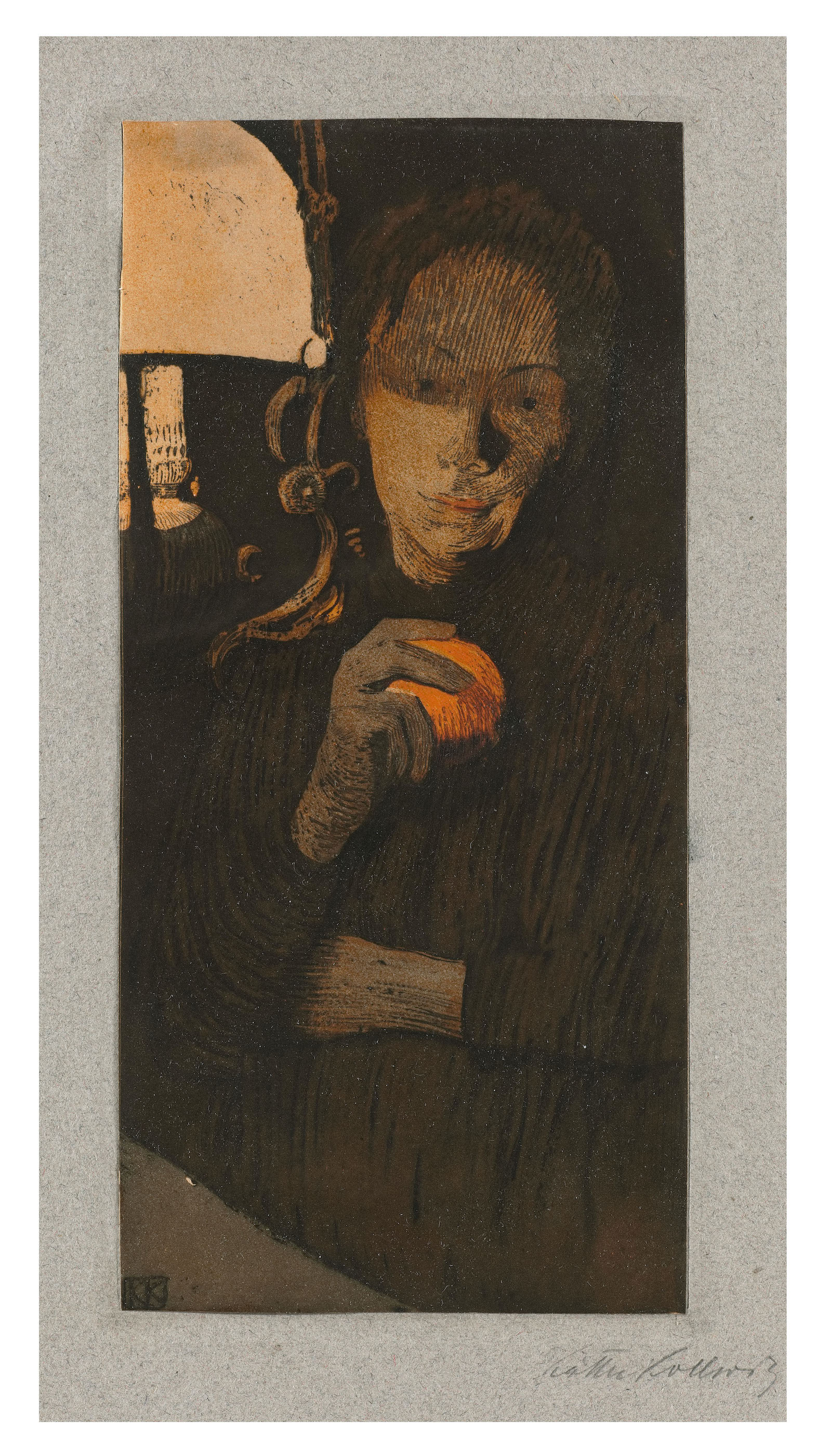Käthe Kollwitz was a German artist who worked with painting, printmaking, and sculpture. Her most famous art cycles depict the effects of poverty, hunger, and war on the working class. Despite the realism of her early works, her art is now more closely associated with Expressionism. Kollwitz was the first woman not only to be elected to the Prussian Academy of Arts but also to receive honorary professor status.
The print we present today (thanks to the Staatliche Kunstsammlungen Dresden), entitled Woman with an Orange, expresses her exploration of the art of the Nabis more convincingly than any other work. Some aspects of Pierre Bonnard's art are very visible here—the narrow format, the strikingly flat depiction with its lack of sculptural modeling, the view from a slightly elevated angle, the table cut at the bottom of the image, and the two-dimensional background.
Woman with an Orange was first shown at the fourth exhibition of the Berlin Secession in 1901. The work subsequently triggered a controversy over combination prints in Die Kunst für Alle, one of the most popular art magazines around 1900. This dispute was not only about the pros and cons of combining different kinds of graphic techniques, it even stated in one article that Kollwitz was the inventor of a combination of lithograph and etching.
Käthe Kollwitz's etching is featured in the set of 50 postcards with Women Artists masterpieces that you will find in the DailyArt Shop; don't miss it!
P.S. Also, learn why Käthe Kollwitz was one of Germany's greatest artists. <3


 Käthe Kollwitz
Käthe Kollwitz